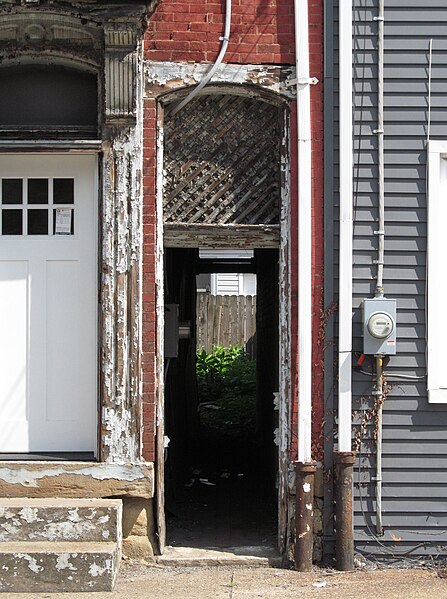
The Bellevue line just narrowly misses this house, making it the first building in Avalon outside Bellevue, and the first on California Avenue outside the city, since California Avenue turns into Lincoln Avenue while it passes through Bellevue. The house was used as the Orion C. Pinkerton funeral home, but when old Pa Pitt took this picture a few days ago, the house was for sale.
This is clearly the work of an architect rather than just a builder, and enough details are preserved that it would be worth restoring. That blank spot above the awning, for example, probably had a stained-glass window in it, and it could have one again.
The off-center front door bothers Father Pitt. He finds it hard to imagine an architect designing the house that way originally. Yet the ornamental brickwork above the door matches that above the windows, as if it had always been that way. At the cost of making the picture look a little artificial, Father Pitt has compressed the shadows and highlights to make the details under the porch roof mire visible: enlarge the picture and judge for yourself what is going on with that front door.

























